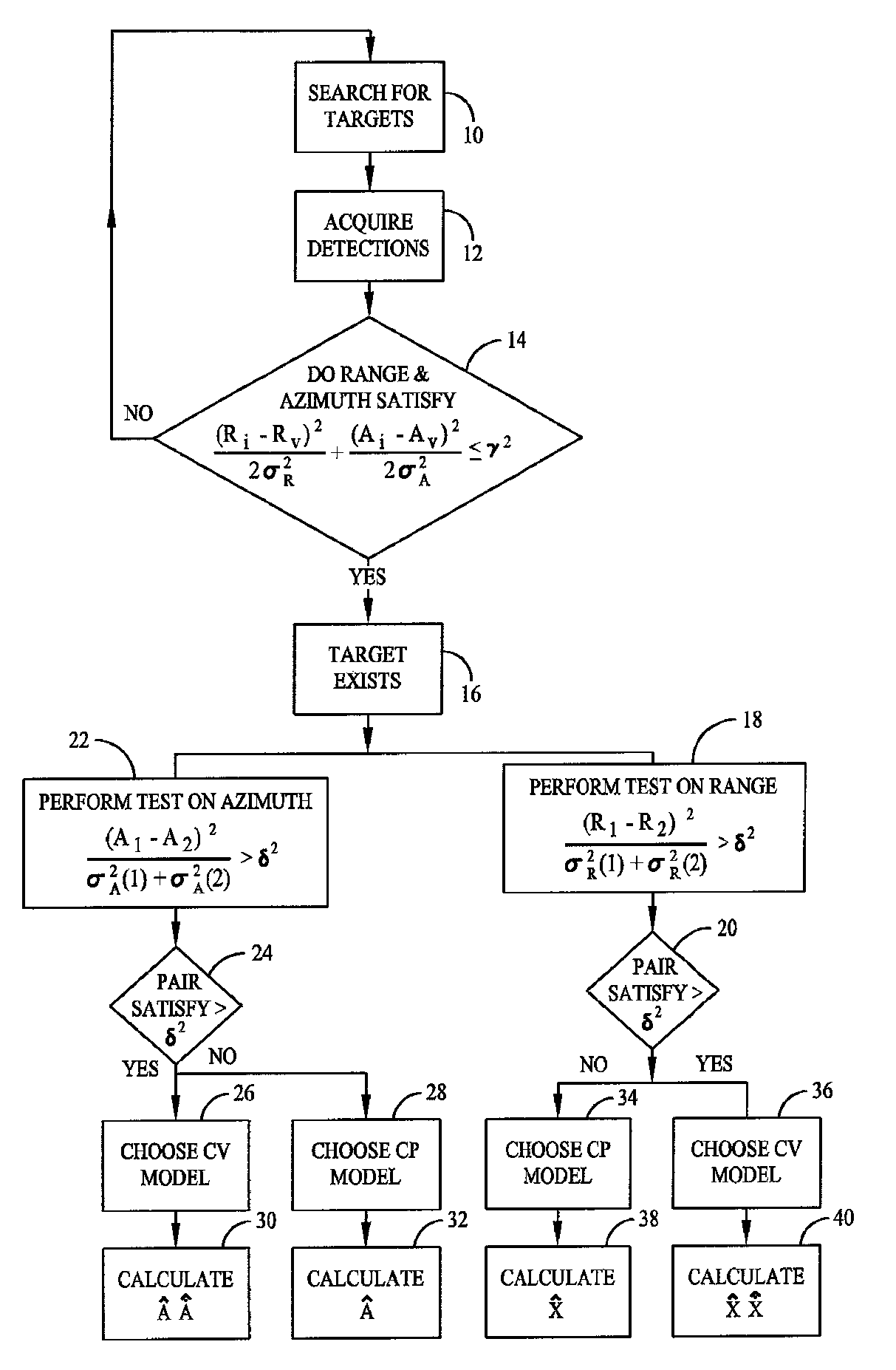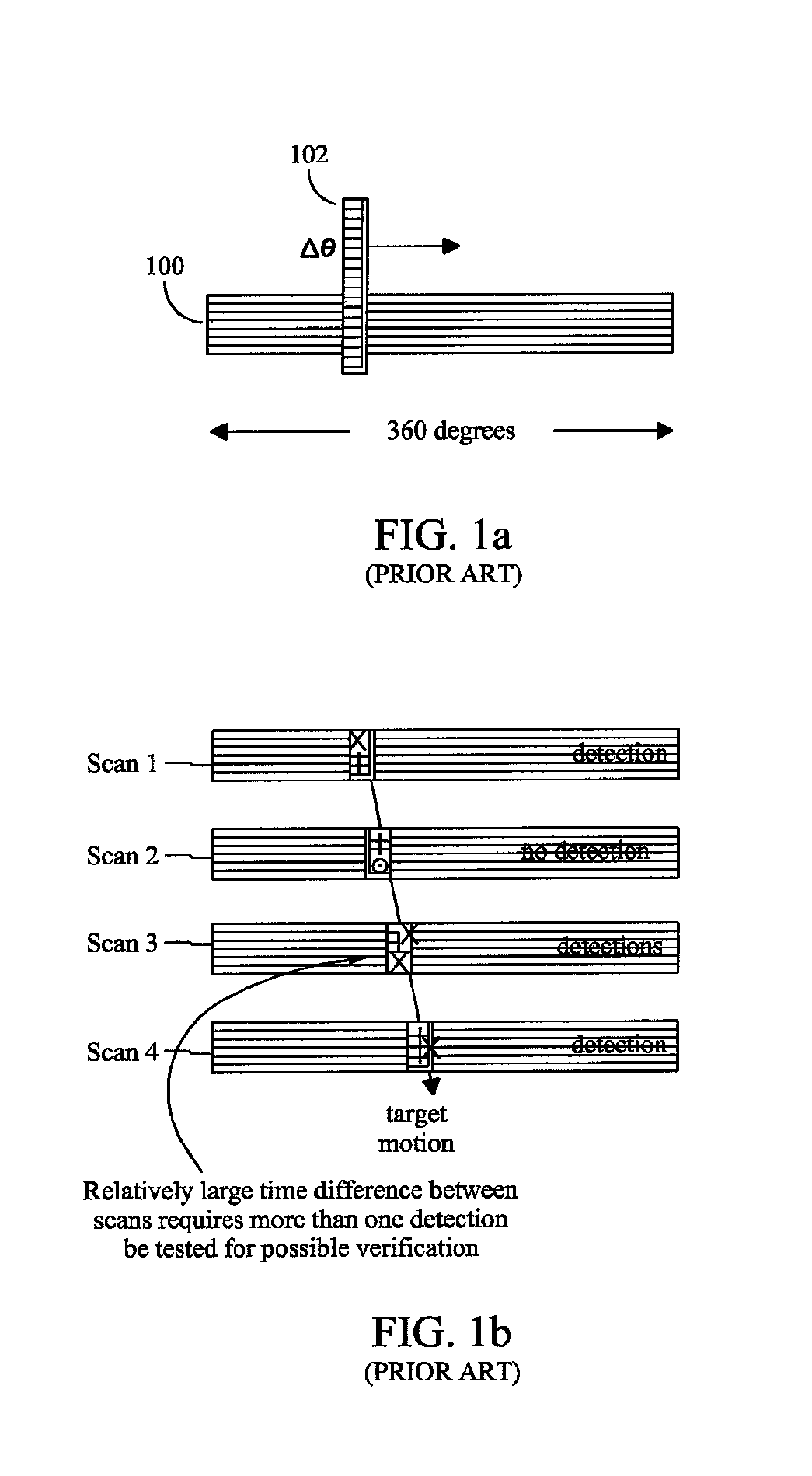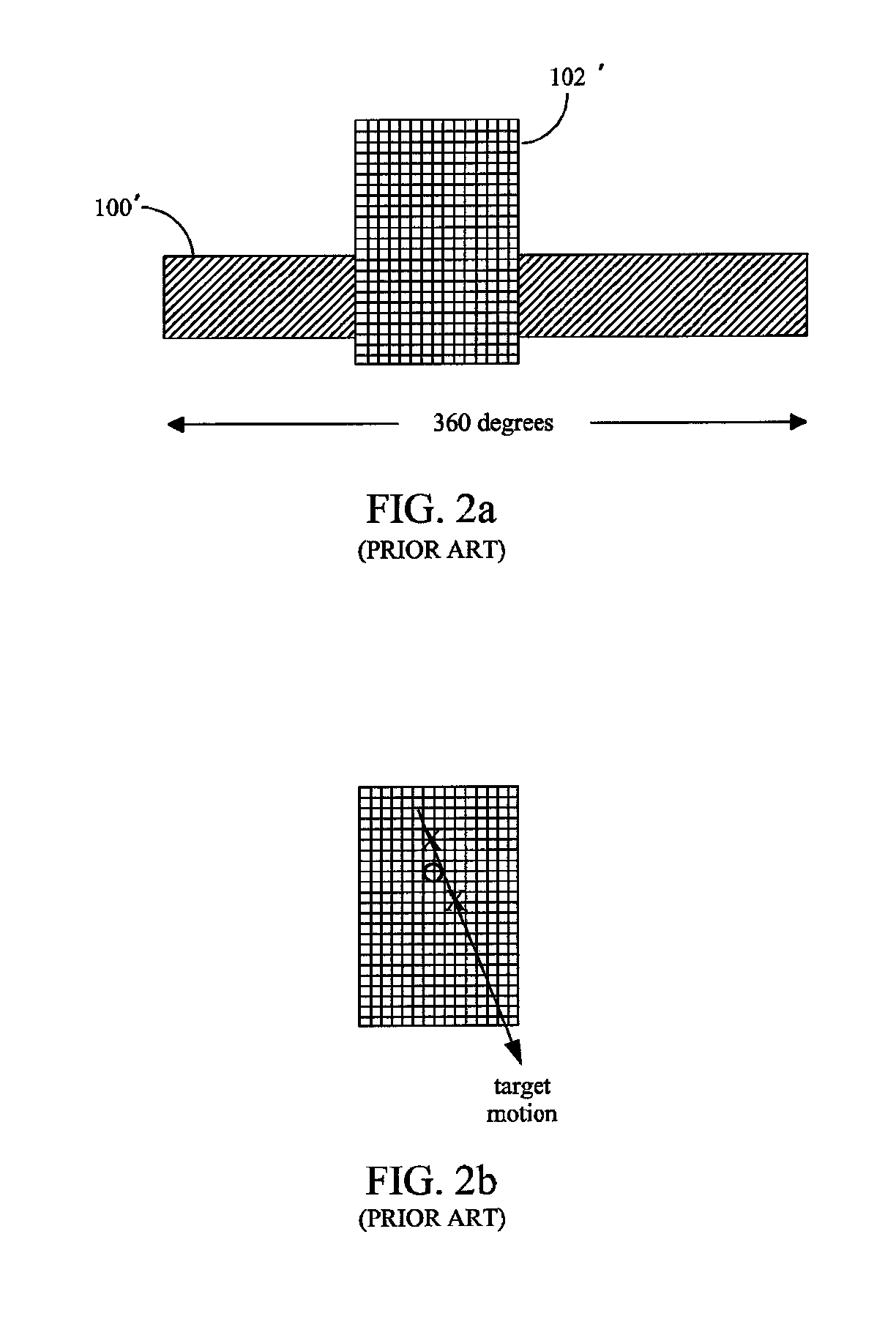Single scan track initiation for radars having rotating, electronically scanned antennas
a single scan and antenna technology, applied in the field of radar systems, can solve the problems of difficult tracking, difficult tracking, and conventional methods of track initiation, and achieve the effect of sufficient predictive validity
- Summary
- Abstract
- Description
- Claims
- Application Information
AI Technical Summary
Benefits of technology
Problems solved by technology
Method used
Image
Examples
Embodiment Construction
[0054]In the figures to be discussed, the circuits and associated blocks and arrows represent functions of the process according to the present invention, which may be implemented as electrical circuits and associated wires or data busses, which transport electrical signals. Alternatively, one or more associated arrows may represent communication (e.g., data flow) between software routines, particularly when the present method or apparatus of the present invention is a digital process. The invention described herein utilizes electronic processors, such as computers having data storage means, to process the data and perform mathematical computations using algorithms for accomplishing the stated goal: determination of an initial-track having sufficient predictive validity from one scan's worth of detections.
[0055]It is understood that the subject invention may reside in the program storage medium that constrains operation of the associated processors(s), and in the method steps that a...
PUM
 Login to View More
Login to View More Abstract
Description
Claims
Application Information
 Login to View More
Login to View More - R&D
- Intellectual Property
- Life Sciences
- Materials
- Tech Scout
- Unparalleled Data Quality
- Higher Quality Content
- 60% Fewer Hallucinations
Browse by: Latest US Patents, China's latest patents, Technical Efficacy Thesaurus, Application Domain, Technology Topic, Popular Technical Reports.
© 2025 PatSnap. All rights reserved.Legal|Privacy policy|Modern Slavery Act Transparency Statement|Sitemap|About US| Contact US: help@patsnap.com



